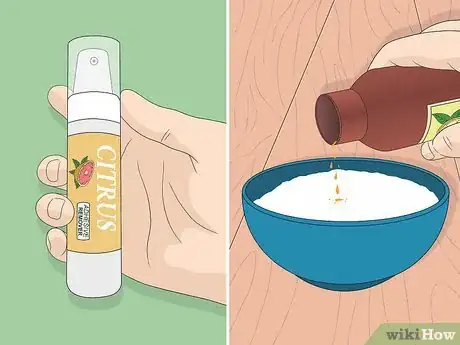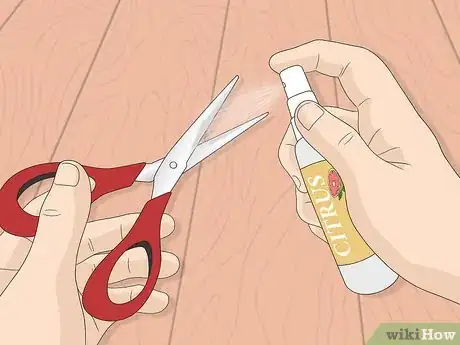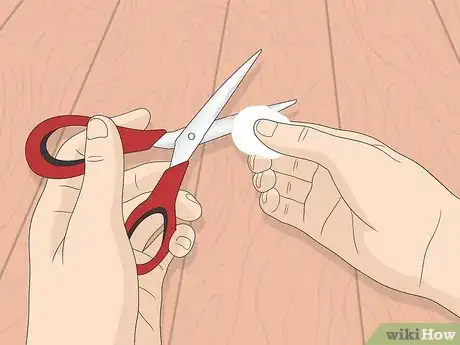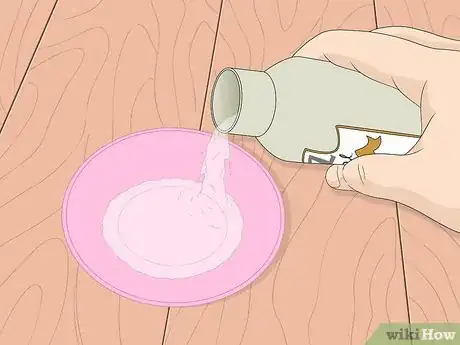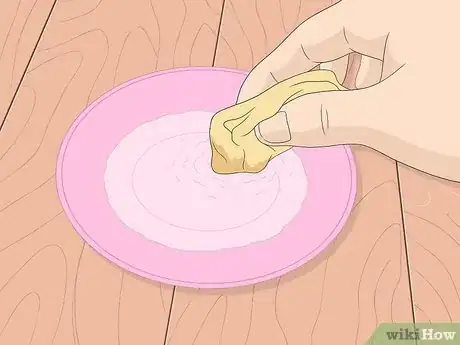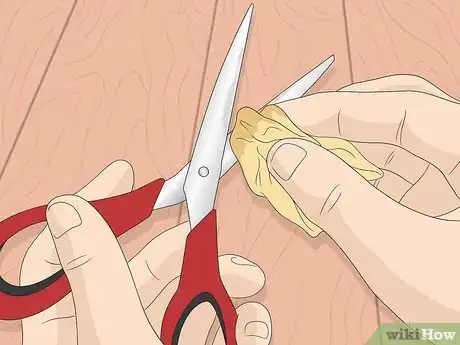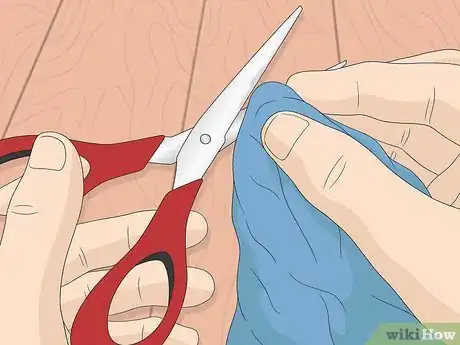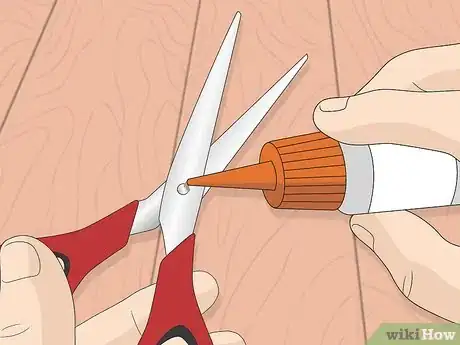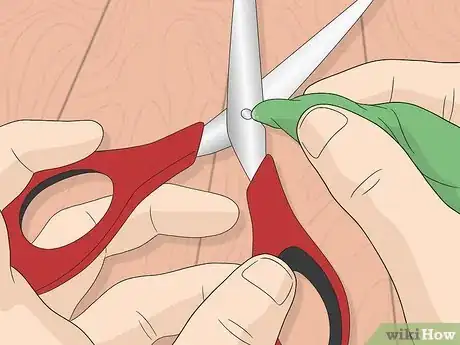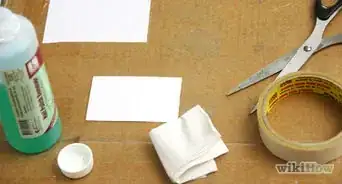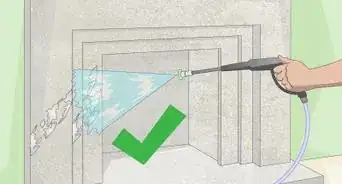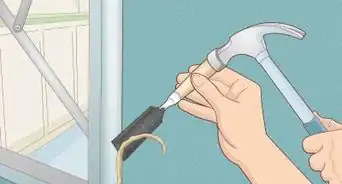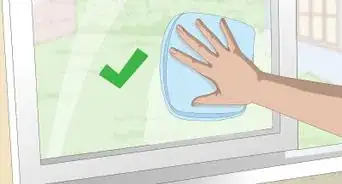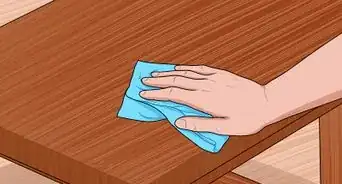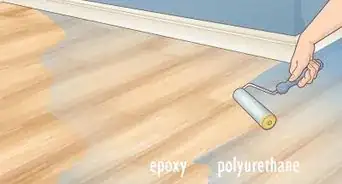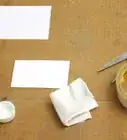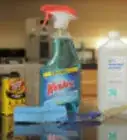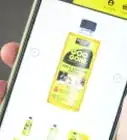This article was co-authored by wikiHow Staff. Our trained team of editors and researchers validate articles for accuracy and comprehensiveness. wikiHow's Content Management Team carefully monitors the work from our editorial staff to ensure that each article is backed by trusted research and meets our high quality standards.
wikiHow marks an article as reader-approved once it receives enough positive feedback. In this case, several readers have written to tell us that this article was helpful to them, earning it our reader-approved status.
This article has been viewed 119,750 times.
Learn more...
When you use scissors to cut sticky material, like tape, your blades may get coated in an adhesive residue. Before you move on to the next or task put away your blades, you need to remove the sticky substance from you scissors. Clean your blades with a safe and effective product such as a citrus-based adhesive remover or white vinegar.
Steps
Using a Citrus-Based Adhesive Remover
-
1Purchase or make a citrus-based adhesive remover. Natural citrus oils are powerful degreasers—they can safely and effectively remove adhesives from mirrors, picture frames, and scissor blades. You may purchase a citrus-based adhesive remover, or make your own at home.
- Combine equal parts baking soda and coconut oil in a small, clean jar. Do not melt the coconut oil.
- Add a few drops of natural citrus oil to the mixture and stir.[1]
-
2Apply the adhesive remover to the scissor blades. Cover your work surface with paper. Squirt your store bought spray onto the scissors or coat the blades with your homemade cleaner. Allow the product to sit on the blades for ten minutes.
- Apply the product to each side of the scissor blades.
- The paper will protect your work surface from the cleaning products.[2]
Advertisement -
3Wipe off the cleaner with a cotton ball. With a clean cotton ball, carefully wipe down the blades. Run the cotton ball over both sides of the blades until all of the cleaner and adhesive is gone.
- Wipe the blades from the base of the handles to the tips of the blades.
- If the sides of your blades are coated in adhesive, wrap the cotton ball around the blade and carefully wipe up and down.[3]
Using White Vinegar
-
1Fill a bowl with white vinegar. Vinegar is an excellent, natural cleaner. Pour white vinegar into a small bowl.
- Do not dilute the white vinegar with water.
- While soapy water with alcohol-based products will dry out your scissors, causing them to rust, vinegar will not.[4]
-
2Soak a clean cloth in the vinegar. Retrieve a fresh rag. Dip the clean rag into the dish of white vinegar. Allow the vinegar to absorb into the rag.
- You may wish to wring out the rag to remove excess vinegar.
- Use a thick rag—it will protect your from the blades.[5]
-
3Wipe down the blades with the cloth. Open up the blades of your scissors. Slowly and carefully run the cloth over the blades to remove the adhesive. Dip the cloth in vinegar as needed.
- When you wipe the blades, begin at the base of the handles and move down towards the tips.
- If the sides of your blades are coated in sticky residue or the residue is not coming off, encircle the blades with the cloth and apply pressure as you wipe down the blades.[6]
Cleaning and Oiling Your Scissors
-
1Remove dirt and lint from your blades. Once you’ve removed the adhesive, it is important to protect and preserve your blades by cleaning and oiling your scissors. Wipe down the blades, handles, and pivot with a piece of clean, soft fabric. The fabric will remove lint, grime, and residue from the cleaning products you used.
- The pivot is the point at which the two blades join.
- As you wipe down the blades with the cloth, open and close the scissors so you can clean around the pivot.
-
2Oil your blades. Open your scissors. Place several drops of oil onto the front and back of the pivot, or adjustment, screw. Apply several more drops of oil to the pivot between the blades. Open and close the blades several times until they move smoothly.
- If needed, add more drops of oil to the blades.
- When oiling your blades, you may use household sewing machine oil or scissor oil.
-
3Wipe off the excess oil. Once the blades are opening and closing smoothly, retrieve a clean, soft cloth. Carefully run the cloth over the blades to soak up the excess oil.
- Wipe your scissors from the base of the handles to the tip of the blades.
- If your scissors are susceptible to rust, wipe a minor amount of oil over each blade. Prior to using the blades, remove the oil with a fresh, soft cloth.
Community Q&A
-
QuestionCan I use bleaching products?
 T. ChinsenTop AnswererBleaching products are not solvents so, they will not remove any adhesive. Most adhesives are alcohol or acetone-based. If an adhesive has a specific solvent base, it will require that solvent to remove it.
T. ChinsenTop AnswererBleaching products are not solvents so, they will not remove any adhesive. Most adhesives are alcohol or acetone-based. If an adhesive has a specific solvent base, it will require that solvent to remove it.
References
- ↑ http://www.onegoodthingbyjillee.com/2014/05/diy-goo-gone-gunk-remover.html
- ↑ https://www.youtube.com/watch?v=I7nTGJWjhs0
- ↑ https://www.youtube.com/watch?v=I7nTGJWjhs0
- ↑ http://cleanmyspace.com/ten-cool-cleaning-uses-for-vinegar/
- ↑ http://cleanmyspace.com/ten-cool-cleaning-uses-for-vinegar/
- ↑ http://cleanmyspace.com/ten-cool-cleaning-uses-for-vinegar/
